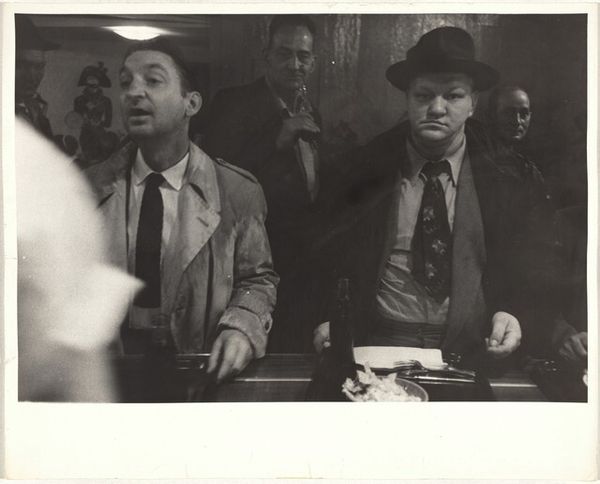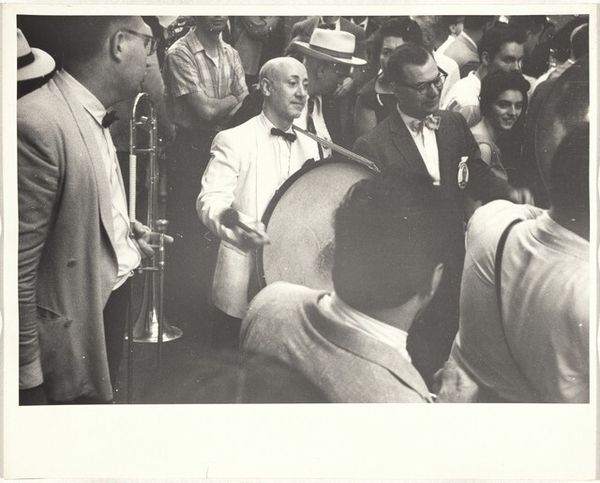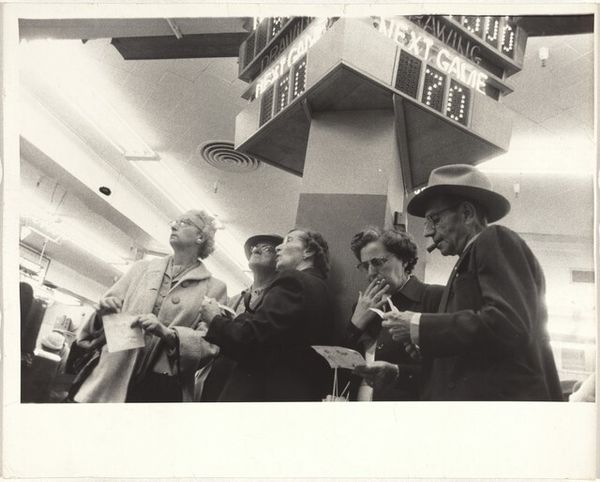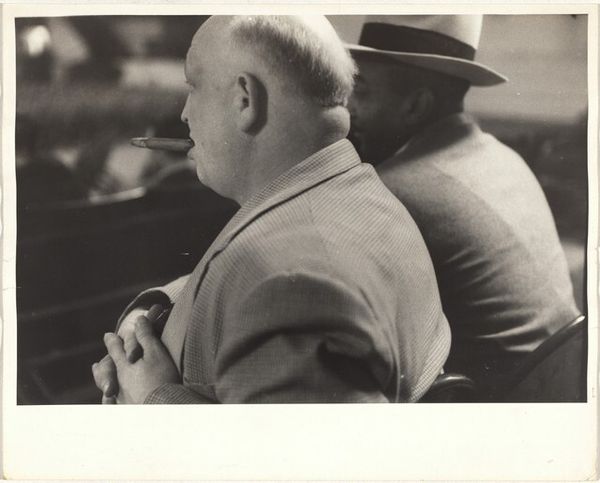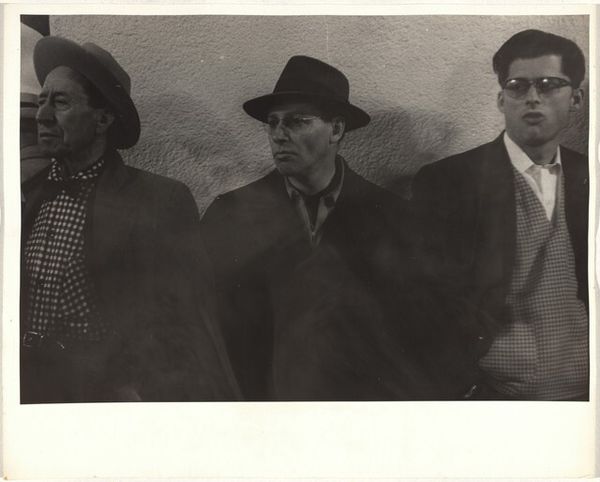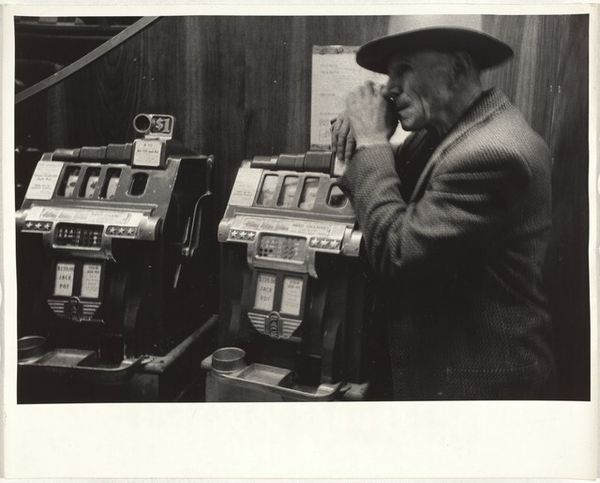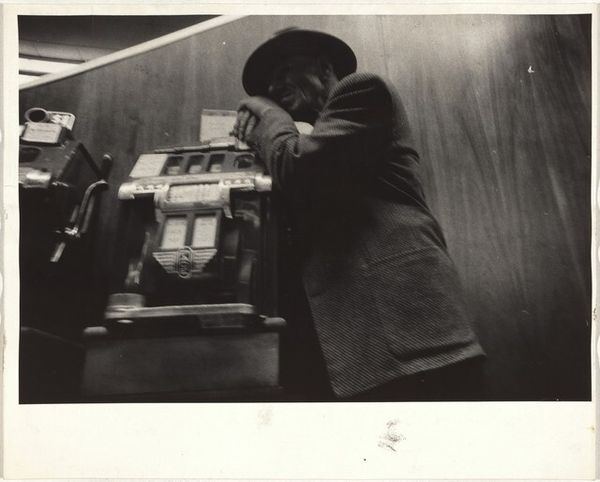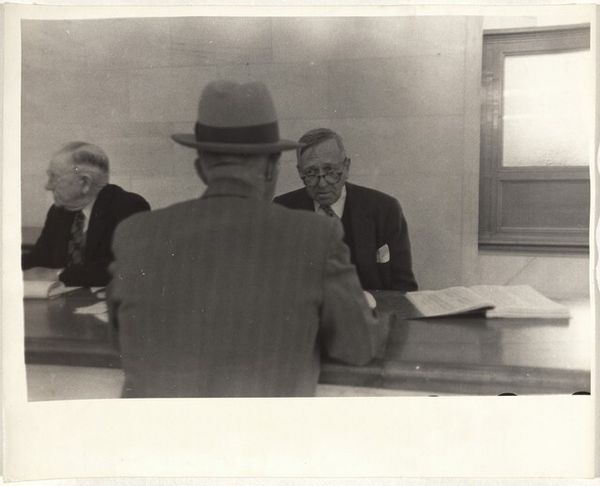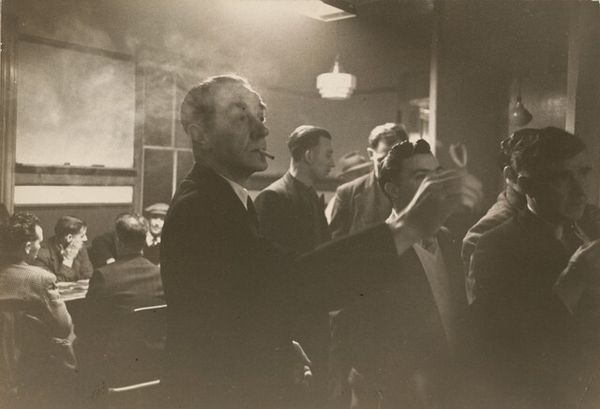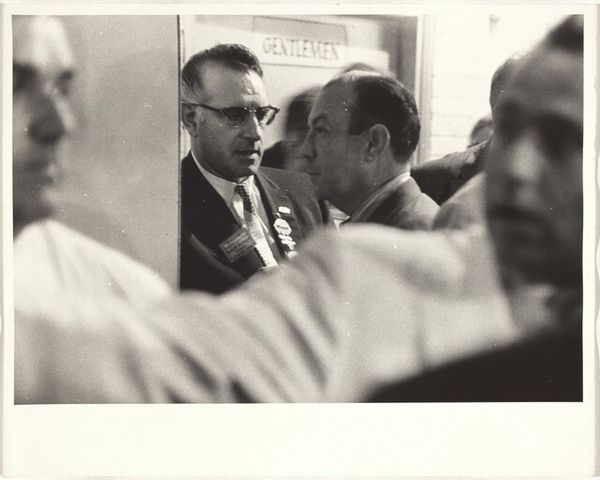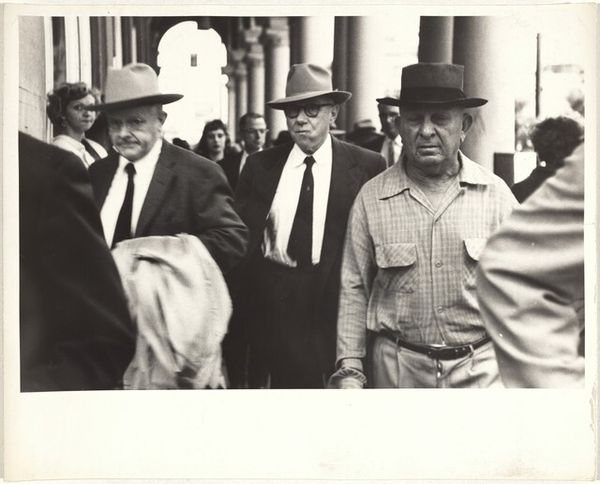
print, photography, gelatin-silver-print
#
portrait
# print
#
wedding photography
#
street-photography
#
photography
#
historical photography
#
gelatin-silver-print
#
modernism
#
realism
Dimensions: sheet: 20.2 x 25.2 cm (7 15/16 x 9 15/16 in.)
Copyright: National Gallery of Art: CC0 1.0
Curator: So, first impressions? What does Robert Frank's "Cafeteria Line--San Francisco," taken in 1956, evoke in you? Editor: Well, the first thing that hits me is this overwhelming feeling of… waiting. It’s heavy, like the air before a storm. Everyone's got that look, you know? Like they’re already tired, even before they've gotten their coffee. It feels like a metaphor, doesn’t it, for something bigger? Curator: Absolutely. This image comes from Frank’s seminal work, "The Americans." The book itself was criticized initially but became hugely influential. He was deconstructing the mythology of the 1950s American Dream, revealing the cracks in its facade. The cafeteria line becomes a powerful symbol. Who has access? Who is made to wait? Whose hunger goes unnoticed? Editor: I see it. The composition reinforces that alienation. They're all lined up, shoulder to shoulder, but separate. There's no connection, just individual burdens reflected in their faces. Is that desperation I see in some of them? Curator: I think "disillusionment" might be more accurate, even. Consider that it was taken during a period marked by McCarthyism and burgeoning civil rights unrest, so these men likely represent different layers of American society all navigating that tension in a contained space. The way Frank framed this – cutting off heads, obscuring faces – heightens this idea that they could be stand-ins for countless others enduring the same. It is a gelatin silver print, a classic choice for that era. Editor: You’re right, it’s like they’re fragments, pieces of a larger puzzle. And gelatin silver prints… they’ve got this quality, this immediacy, a direct connection to the moment, you know? Did Frank intentionally use this? Or do I have it all wrong? Curator: His stylistic choices were intentional, part of a broader rejection of idealized imagery that dominated photography before him. His graininess, his stark contrasts… he wasn't interested in beauty for beauty’s sake. The impact came from conveying raw experience. I also find the hats fascinating. Notice how many men are wearing hats. What social dynamics or statements do you suppose these symbolize? Editor: The hats feel like uniforms, some kind of a weird shared costume to mask reality! Look at their clothes. Everyone's in shades of gray and black, as if stripped of any individuality...It’s powerful, yet somber. This artwork hits so hard. Curator: It still resonates. Frank challenged us to confront uncomfortable truths. Editor: Totally. I walk away with this desire to look a bit closer the next time I'm stuck in line, you know? Just really see who's around me, to sense how it feels to them to also wait. Maybe this artwork helps you feel something in common.
Comments
No comments
Be the first to comment and join the conversation on the ultimate creative platform.
